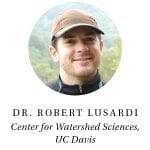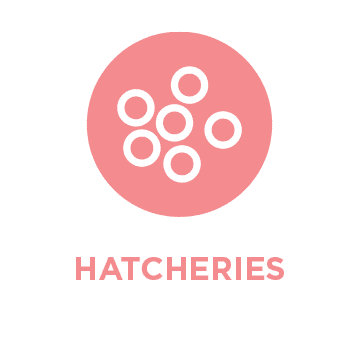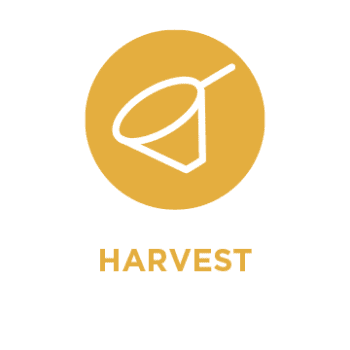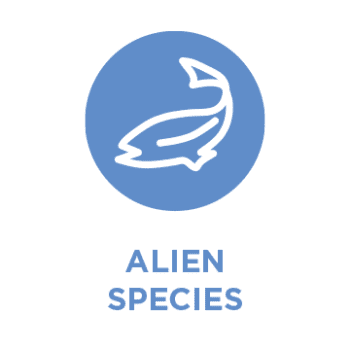Types of Steelhead
Select a type to learn more


Select a type to learn more
Sign up to hear from California Trout! CalTrout’s mission is to ensure healthy waters and resilient wild fish for a better California. Hear about our work and how to get involved through our monthly newsletter, The Streamkeeper’s Blog, “Trout Clout” action alerts, article from our e-magazine, The Current, event invites, and much more! We respect your privacy and will never sell or share your information with other organizations.
The findings from this study have made it clear – the time to act is now. We can work together to ensure that California will always have resilient populations of wild fish thriving in clean, cold water streams.
Here are some things you can do today:

Peter Moyle is the Distinguished Professor Emeritus in the Department of Wildlife, Fish and Conservation Biology and Associate Director of the Center for Watershed Sciences, at UC Davis. He is author or co-author of more than 240 publications, including the definitive Inland Fishes of California (2002). He is co-author of the 2017 book, Floodplains: Processes and Management for Ecosystem Services. His research interests include conservation of aquatic species, habitats, and ecosystems, including salmon; ecology of fishes of the San Francisco Estuary; ecology of California stream fishes; impact of introduced aquatic organisms; and use of floodplains by fish.
Robert Lusardi is the California Trout/UC Davis Wild and Coldwater Fish Researcher focused on establishing the basis for long-term science specific to California Trout’s wild and coldwater fish initiatives. His work bridges the widening gap between academic science and applied conservation policy, ensuring that rapidly developing science informs conservation projects throughout California. Dr. Lusardi resides at the UC Davis Center for Watershed Sciences and works closely with Dr. Peter Moyle on numerous projects to help inform California Trout conservation policy. His recent research interests include Coho salmon on the Shasta River, the ecology of volcanic spring-fed rivers, inland trout conservation and management, and policy implications of trap and haul programs for anadromous fishes in California.

Patrick Samuel is the Conservation Program Coordinator for California Trout, a position he has held for almost two years, where he coordinates special research projects for California Trout, including the State of the Salmonids report. Prior to joining CalTrout, he worked with the Fisheries Leadership & Sustainability Forum, a non-profit that supports the eight federal regional fishery management councils around the country. Patrick got his start in fisheries as an undergraduate intern with NOAA Fisheries Protected Resources Division in Sacramento, and in his first field job as a crew member of the California Department of Fish & Wildlife’s Wild and Heritage Trout Program.

This factor refers to hard rock mining, from which contaminated tailings, mine effluents, and toxic pollutants may have been dumped or leached into streams, mostly from abandoned mines. Mercury mining, used for processing gold in placer and dredge mining, left a lasting negative impact on wildlife.

Hatcheries and releases of hatchery reared salmonids into the wild can negatively impact wild populations through competition, predation, disease, and loss of fitness and genetic diversity. Hatchery influences are especially apparent to for anadromous species where dams blocked access to spawning habitat and hatcheries were established as mitigation. Inland trout can also be impacted with stocking of hatchery fish for recreation.

All anadromous salmonids depend on estuaries for rearing during a portion of their lives. Most estuaries in the state are highly altered from human activities, especially diking, draining, and sandbar removal between the estuary and ocean. Land-uses surrounding estuaries often involve extensive wetland reclamation, greatly reducing ecological function and habitat complexity.

Harvest relates to legally regulated commercial, tribal, and recreational fisheries, as well as illegal harvest (poaching). Over-harvest can have substantial impacts on fish populations, particularly for those with already limited abundance or distributions, those which are isolated or reside in discrete habitats making them easy to catch (e.g. summer steelhead), or those that attain large adult size (e.g., Chinook salmon).

Many heavily logged watersheds once supported the highest species diversity and abundance of fishes, including anadromous salmon and steelhead. Improperly managed logging increases sediment in streams, increases solar input which increases stream temperatures, and degrades riparian cover. Stream habitat is also degraded by the extensive network of unpaved roads that supports timber extraction.

Transportation corridors such as highways confine stream channels and increase sedimentation, pollution, and habitat degradation from storm runoff and altered streamflows. Culverts and other passage or drainage modifications associated with roads often block migration and restrict fish movements, which can fragment populations.

Non-native species (including fishes and other aquatic organisms) are ubiquitous across many of California’s watersheds; their impacts on native species through hybridization, predation, competition, increased disease transmission, and habitat alteration can be severe.

Wildfires are a natural component of California’s landscape. However, fire suppression, coupled with climate change, has made modern fires more frequent, severe and catastrophic. The transition from relatively frequent understory fires to less frequent, but catastrophic, crown fires can have a severe impact on fish habitat and wipe out populations with narrow habitat ranges.

Impacts from agriculture include streams polluted by agricultural return water or farm effluent; reduced flow due to diversions which can affect migratory patterns; and increased silt and pesticides in streams. Marijuana grow operations, legal and illegal, were considered in this metric.
 Dams block access to historical spawning and rearing habitats. Downstream, dams alter the timing, frequency, duration, magnitude, and rate of change of flows decreasing habitat quality and survival.
Dams block access to historical spawning and rearing habitats. Downstream, dams alter the timing, frequency, duration, magnitude, and rate of change of flows decreasing habitat quality and survival.

As California’s population grows, rural development increasingly encroaches along or near streams. Resulting impacts include water diversions, groundwater pumping, streambed alteration (to protect houses from flooding, construct road crossings, etc.), and pollution (especially from septic tanks and illegal waste dumping).